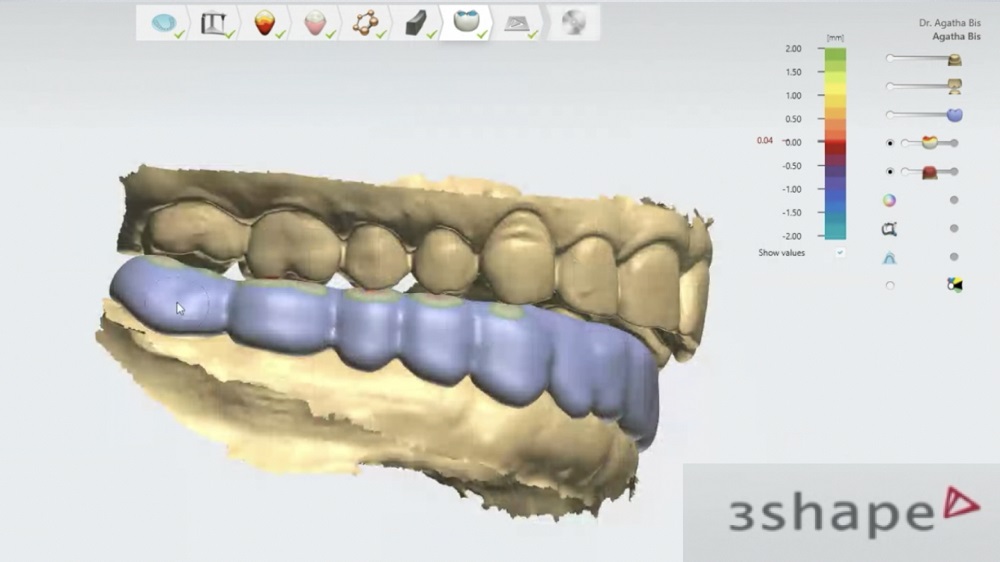Please see blog 1 in this series for introduction into the rationale and appliance design choice when deciding on which type of appliance to make in the 3Shape Design Studio.
When treating a patient who is a clencher, one thing that is key to determine is whether the patient is a true clencher or if there is some evidence of bruxism as well. In clenching, all back teeth are touching and when posterior teeth touch, the elevator muscles (temporalis, masseter, and medial pterygoid) all activate. So in a clencher, appliances with posterior contacts have a higher muscle activity. With a clencher then, we want to separate the posterior teeth by positioning contacts on the appliance in the anterior region, like with an anterior bite plane or deprogrammer. This decreases elevator muscle activity. As a result, the lateral pterygoid muscles no longer have to hold the mandible forward and they release, seating the condyle in the fossa.
Muscle deprogramming can be confusing and some dentists are unsure when to use it and who to use it for. The purpose of muscle deprogramming is to reduce or relax muscle activity levels to eliminate muscle pain or tension. What we want to accomplish and capture is that 3 dimensional position where the muscles are relaxed and the condyles are in a fully seated optimum position. What deprogramming accomplishes, by placing something in the anterior to eliminate posterior occlusal contacts, is it allows the lateral pterygoid to relax, and release the condyle so that it can fully seat in the fossa.
The indications for an anterior plane appliance, also known as the deprogrammer, are as follows:
- clencher with a healthy jaw joint
- Muscle pain or tension
- Use lucia jig or leaf gauge to release the lateral pterygoid muscle and seat the condyle fully
The contra-indications for this type of appliance are as follows:
- joint pain and pain on loading
- Disc displacement
- Intra-capsular issues
- TMD symptoms like ear ringing or ear pain
- Anyone who gets worse on leaf gauge or Lucia jig
- Presence of lingual wear on anterior teeth
The risks for using this appliance on a regular basis include anterior intrusion or posterior super-eruption with excessive use.
When designing the anterior bite plane appliance in 3Shape Splint Studio, scan the patient with the 3Shape Trios intraoral scanner and capture the bite in MIP or using the leaf gauge (see blog 4 in this series on Capturing the Bite). One of my frequent 3Shape Scanner Tips is: trim the models before sending it to the 3Shape Splint Studio, as this saves you time when designing the appliance later on. When designing the appliance, follow the 3Shape Splint Studio digital workflow and raise the anterior platform to the opposing, then refine so that only anterior teeth touch when closing and in lateral movements. You then send to print in your 3D printer. I use the Formlabs 3D printer in my practice to quickly and efficiently print all types of appliances on a daily basis.
Remember that anterior-only contact increases joint loading if muscle activity doesn’t decrease. If you don’t get a reduction in muscle activity, consider an appliance that reduces joint loading. See next blog for more on this type of appliance.

